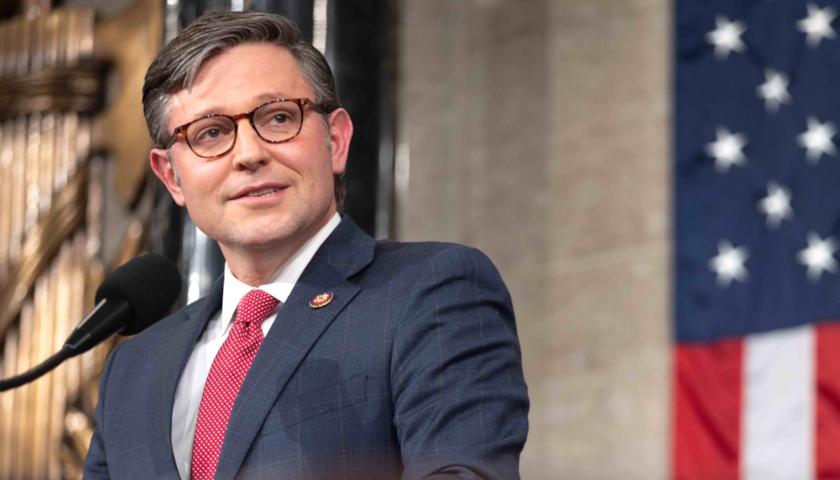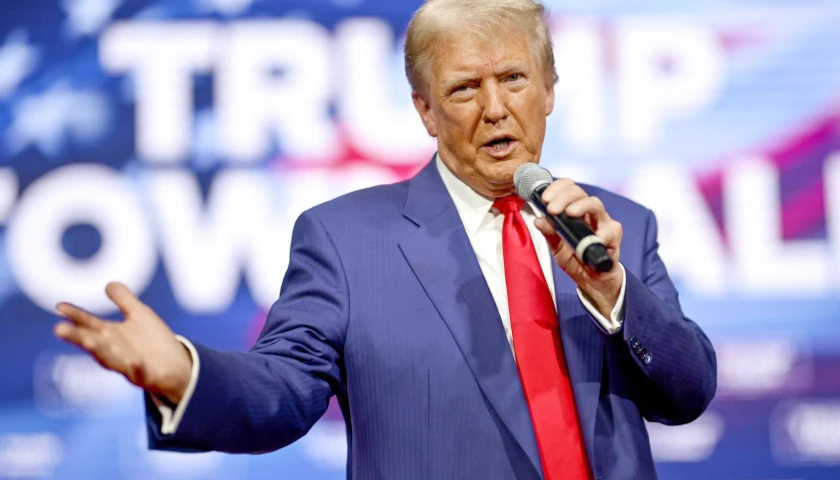by Ken Masugi
A shrewd observer of American politics, Thomas Edsall sums up the evidence that the Democratic Party has rapidly become a far more left-wing party than it ever has been. In the last 18 years, the percentage of white Democrats identifying themselves as liberal doubled, from 28 to 55 percent, while percentages of moderates and conservatives fell. This dramatic change may explain not just the 2018 elections but the future of American politics: 2018 may be the year Democrats push America over the cliff.
Using recent survey data, Edsall highlights several changes, notably: “Progressive activists are ‘more than twice as likely [than a typical American] to say that they never pray (50 percent to 19 percent), ‘almost three times more likely to be “ashamed to be an American”’ (69-24), eleven percentage points more likely to be white (80-69), and ‘twice as likely to have completed college (59-29).’”
Ashamed to be an American by almost three to one. That just about says it all. The Progressive Democratic Party breaks with its honorable past as the world’s oldest political party and is recently reborn as the radical edge of History, the dictatorship of the enlightened. Within the blinders and prods of elite education, they have become a stampeding herd of independent minds.
These progressives reject the duty and discipline both of religion and patriotism (not to mention nature) and indulge inanities they learned in college. As George Orwell put it, referring to their kindred fascists, “One has to belong to the intelligentsia to believe things like that: no ordinary man could be such a fool.”
Accordingly, the Democratic stance on the economy (socialism or “managed capitalism”), foreign policy (more wars and more United Nations), borders (open), and political correctness (autocorrect) follows the intellectual slogans of the day, not common sense. Edsall sees this liberal cohort as more concerned with “social issues involving race, gender and sexual identity than it is on economic matters.” To be practical is to be out of touch—retro. Abstract theorizing frees one to defy experience.
Within the Democratic Party, blacks who want jobs in construction have to compete with open-borders advocates who insist Washington mandate gender-neutral bathrooms in public schools. (Moreover, according to other survey data, 2016 marked the first year “white liberals rated ethnic and racial minorities more positively than they did other whites”—an attitude that extends toward immigrants. Not only (white) women but immigrants crowd out blacks’ interests among Democrats).
This perverse preference for John Lennon’s imaginary world over reality is nowhere more evident than in Edsall’s contrast between the attitudes of white liberals and blacks.
“Among white liberals, according to Pew survey data collected in 2017,” he writes, “79.2 percent agreed that ‘racial discrimination is the main reason why many black people can’t get ahead these days.’ 18.8 percent agreed that ‘blacks who can’t get ahead in this country are mostly responsible for their own condition . . . .’” But among blacks, 60 percent blamed discrimination, while 32 percent held blacks themselves responsible. The differences are substantial: Blacks are closer to the overall American view on this issue than white liberals. And blacks have not grown notably more liberal (70 percent identify as “moderate” or “conservative”). Is it any wonder that most blacks have nothing to lose by going with Trump?
And all this, with the political opportunities it afforded, was evident to Trump throughout his campaign. In his May 2016 North Dakota energy speech, he told the crowd:
My message today to all the people trapped in poverty is this: politicians like Hillary Clinton have failed you.
They have used you.
You need something new. I am the only who will deliver it.
We are going to put America back to work.
We are going to put people before government.
We are going to rebuild our inner cities.
We are going to make you and your family safe, secure and prosperous.
Trump repeated this message of hope throughout the country. He distilled this point in his inaugural address, and it remains a key principle in his American greatness domestic policy:
At the center of this movement is a crucial conviction: that a nation exists to serve its citizens.
Americans want great schools for their children, safe neighborhoods for their families, and good jobs for themselves.
These are the just and reasonable demands of a righteous public.
But for too many of our citizens, a different reality exists: Mothers and children trapped in poverty in our inner cities; rusted-out factories scattered like tombstones across the landscape of our nation; an education system, flush with cash, but which leaves our young and beautiful students deprived of knowledge; and the crime and gangs and drugs that have stolen too many lives and robbed our country of so much unrealized potential.
This American carnage stops right here and stops right now.
The “carnage” Trump bluntly speaks of is, in part, the rapine and robbery of “our country of so much unrealized potential.” Individual lives go to waste, as the country suffers. Meanwhile, leftist mayors, governors, and members of Congress sing hosannas to healthcare systems in which illness vanishes. Rarely do we see such a divide between visions of society. Trump’s rhetorical difficulty is not too much winning but perhaps too much truth. Progressives cannot handle the truth. But increasing numbers of black Americans can.
This denial of reality is seen in progressives’ stance toward Trump’s great issue of political correctness. While a third of progressive Democrats concede political correctness has gone too far, that is far from the 80 percent of Americans who do. Which explains why Trump, after some prudent Republican evasions (including his own), was politically astute to question the reliability of Christine Blasey Ford’s accusations against Brett Kavanaugh.
And this brings us to a question Edsall does not raise—the political significance of the brutality of the Kavanaugh hearings.
Here again blacks are getting the short end of the liberal stick—the case since the Civil Rights Act of 1964. It’s the women who are “the most active constituency driving Democratic mobilization.” Blacks are more sober minded about false accusations of rape (remember To Kill a Mockingbird or Mike Tyson). Which raises the simple question of justice in the face of a raging mob.
Here is where we see the rise of the contemporary transformation of the Democratic Party and where it takes us: the world’s oldest political party never recovered from its corruption by slavery in the pre-Civil War era. Whatever the cause, however respectable in origin, the party’s remedies produced more injustice. Given more power, it became even more moralistic about its policies.
This inbred pattern of Democrat destructiveness is likely to worsen, not moderate, should they prevail in 2018.
– – –
Ken Masugi, Ph.D., is a senior fellow of the Claremont Institute. He has been a speechwriter for two cabinet members, as well as for Clarence Thomas when he was chairman of the Equal Employment Opportunity Commission. Masugi is co-author, editor, or co-editor of seven books on American politics. He has taught at the U.S. Air Force Academy, where he was Olin Distinguished Visiting Professor; James Madison College of Michigan State University; the Ashbrook Center of Ashland University; and Princeton University.





